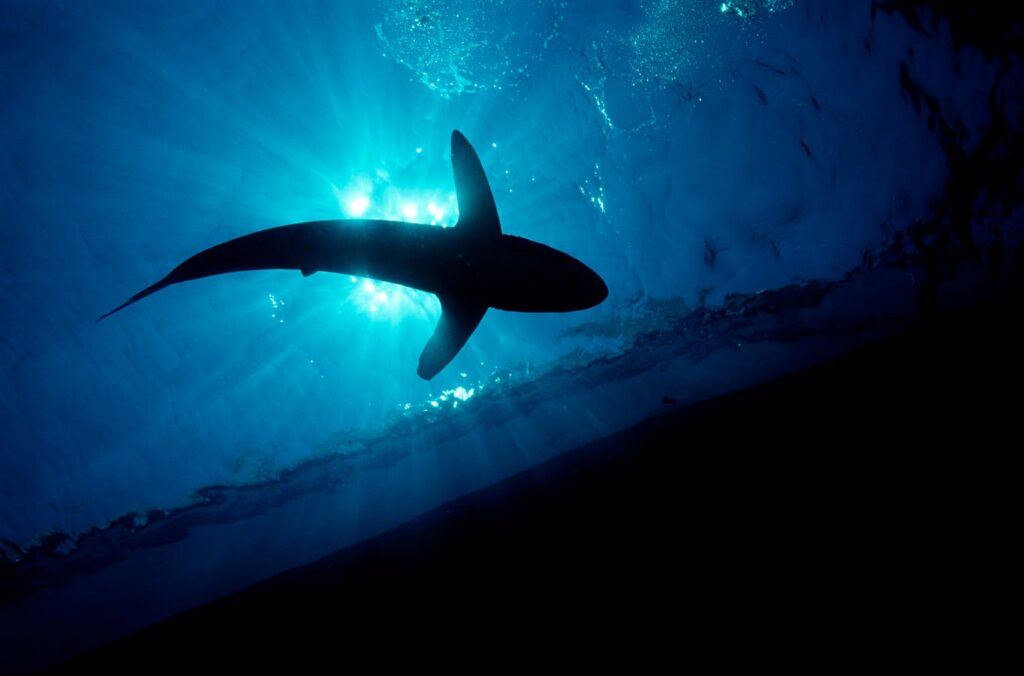Silky shark (Carcharhinus falciformis), one of the most commonly landed sharks on both coasts of … More
ullstein bild via Getty Images
Every year, during the Roman Catholic Lent season, markets across Guatemala bustle with shoppers seeking out a traditional staple: shark and ray meat. Known collectively as elasmobranchs, these species are central to many meals during this religious period. But while the demand is well established, the path that meat takes from ocean to plate is far murkier. The country of Guatemala, bordered by both the Pacific Ocean and the Caribbean Sea, relies on a mix of domestic fisheries and international imports to meet this seasonal surge in consumption. Yet until recently, almost nothing was known about what species were actually being sold, where they were coming from, or whether those species were at risk. A recent nationwide study set out to change that, using DNA analysis to identify the specific sharks and rays found in Guatemalan markets. Scientists collected 370 samples in 2022, along with additional samples from 2016 and 2017, then used molecular tools to uncover the identities and ocean origins of the meat.
The results were eye-opening.
Researchers detected 19 different species, including many that are considered threatened with extinction. Several are listed under the Convention on International Trade in Endangered Species of Wild Fauna and Flora, meaning they require strict monitoring if traded internationally. But even more worrying is that 22% of the samples weren’t shark or ray at all. No, they were teleost fish, mislabeled as elasmobranchs, intentionally or not.
The study also found that Guatemala’s inland markets, especially in its capital Guatemala City, are supplied mostly by shark and ray meat caught along the Pacific coast. However, some of the meat found in these inland markets came from the Atlantic coast as well, either from domestic fisheries or likely through imports. This mixture of sources means that consumers in places far from the coast may unknowingly be purchasing meat from two entirely different ocean ecosystems. One market located on the Atlantic coast was also found to be supplied exclusively with meat from the Atlantic Ocean, while markets on the Pacific coast relied mostly on catches from the Pacific Ocean; this geographic distribution of supply makes logistical sense (since coastal communities often consume what’s locally available) but it complicates conservation efforts because species from the Atlantic and Pacific can belong to distinct populations with different levels of vulnerability. Without clear tracking of where the meat comes from, it is difficult for scientists and conservationists to evaluate the health of those populations or regulate how much can be sustainably harvested from each region.
Cultural traditions and food security matter, but so does species conservation and responsible … More
getty
This holds particularly true for species like the silky shark (Carcharhinus falciformis), one of the most commonly landed sharks on both coasts of Guatemala. Silky sharks are listed under CITES Appendix II and are considered globally vulnerable. Because they are widespread and morphologically similar across regions, genetic techniques are essential to trace whether the meat in a market stall came from the Atlantic or Pacific. This level of detail (or what scientists call “DNA zip coding”) could allow regulators to tailor their management strategies to the specific population under threat. Right now, however, those strategies are lacking. While some imports of Pacific species are reported to CITES, national-level management of shark and ray landings on Guatemala’s Pacific coast remains limited. On the Atlantic side, recent improvements in domestic fisheries oversight are a step in the right direction, but they need to be expanded and enforced to be effective. Better CITES enforcement is also crucial to ensure that imports, particularly from other parts of the Atlantic, are legal and sustainable.
Globally, the shark and ray meat trade is large, growing, and poorly understood. It actually surpasses the fin trade in both volume and value! Elasmobranch meat provides both economic and nutritional security for many coastal communities, but the supply chains that carry it from “boat to plate” are often… murky. Opaque, if you will. See, aggregated trade categories lump together dozens of species and product types, making it hard to trace individual species or enforce regulations. This lack of transparency makes it easier for threatened species to slip through the cracks and onto dinner plates. For countries like Guatemala, which depend on both domestic and international trade to feed a seasonal demand for elasmobranchs, better traceability is essential. Identifying what species are being consumed, where they come from, and how they are being fished is the first step toward ensuring that these resources remain available for future generations.
This study marks the first nationwide attempt to do just that in Guatemala, and the results provide a blueprint for how science can support sustainable seafood consumption in complex trade environments. Because, ultimately, it’s about balance. Cultural traditions and food security matter, but so does species conservation and responsible trade. Tools like genetic testing can help decision-makers see the full picture, not just the meat in the market. And with shark and ray populations facing increasing pressure worldwide, understanding where our food comes from has never been more important.
